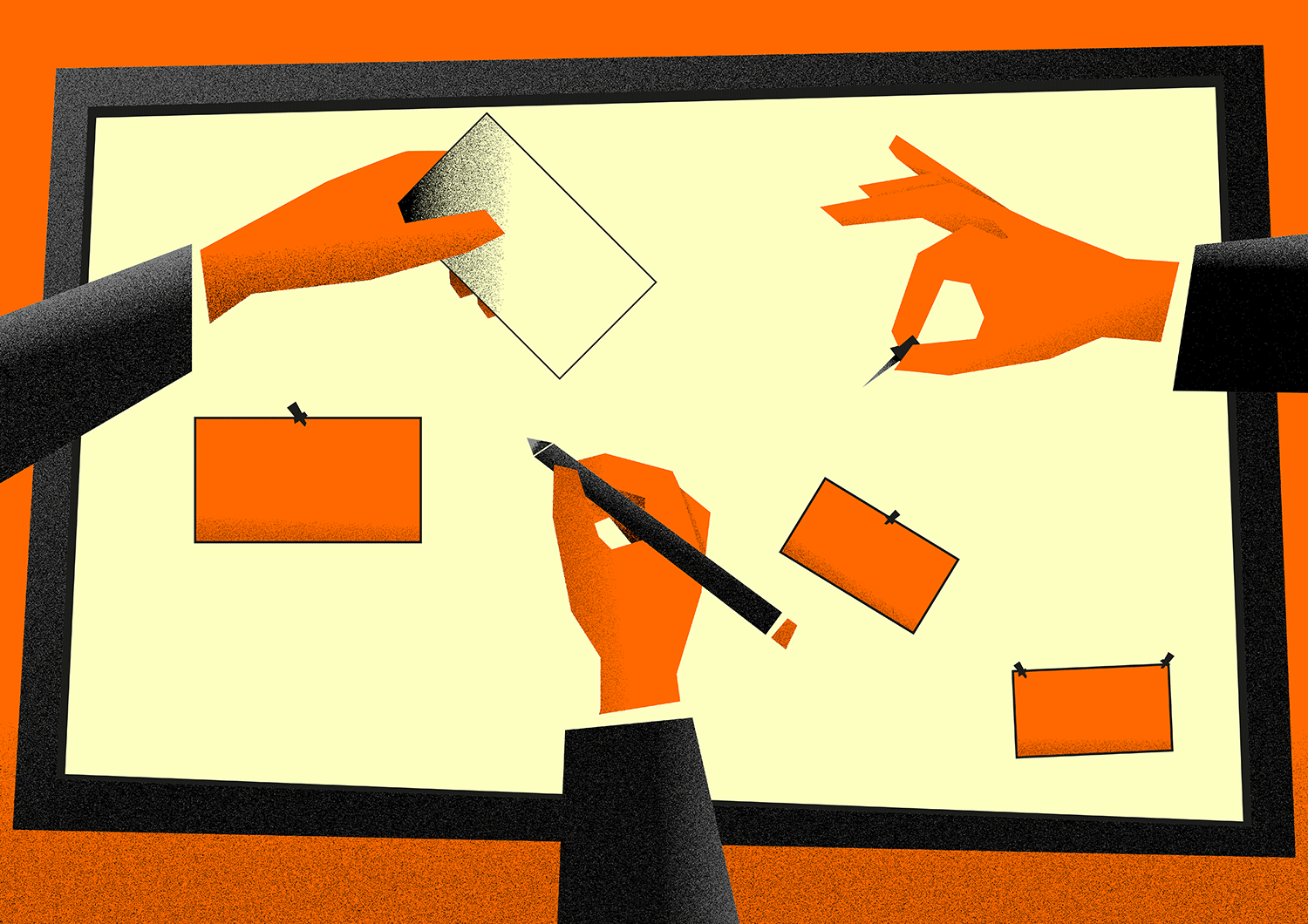Article
Applied Design Thinking: Take Two

I recently wrote about our work with Ullstein Verlag, and how we used design thinking in our redesign of Vorablesen, but, as promised, it doesn’t stop here. The next step in our design thinking journey took us to Stockholm.
Our Swedish colleagues and friends at the agency Familjen Pangea have already integrated design thinking into their work and processes, but they wanted to strengthen their common language and processes around it.
They invited me to their offices in Stockholm to hold a workshop to exchange how we work with design thinking, running through the process and working on a challenge they had defined: how to make the Alumni of the University of Stockholm more attractive and frequented.
During the one day workshop they went through a full design thinking process.
Research
The team started by gathering data on the street, interviewing people to gather the needs and wishes regarding alumni. As always, they were surprised how willing random people are to share their opinion, and how much information you can gather in an hour!
They headed back to the office, created a war room, defined the insights, and decided to focus on the need that could have the most value for the users and for the university.

Ideation
For the ideation stage I chose two methods that are also described in our method cards: The Anti-Problem and Cross-Carding.
With The Anti-Problem, you turn the challenge around. If your challenge is to create an interesting alumni party, you instead formulate the anti-problem, brainstorming about how to create the most boring alumni party of all time. This is not only a very funny exercise, but it also creates a lot ideas because it encourages exaggeration. Afterwards, you just have to turn them back into something positive.
With Cross-Carding, we combined ideas from the anti-problem exercise with abstract images, ideating through association: what ideas could they come up with when they saw the combination of one word and one image? This exercises always allows people to think outside of the box.
Protyping
Then they went into prototyping, either through crafting a physical prototype or through role play. With the prototypes of their ideas, they then presented them to each other, and a winner was found.

And then it was time for their summer party!
It was a fun and effective day. The team tried out the process, and got an introduction to methods that we use regularly in our projects: Personas, Journeys, Interviews, Observation, Shadowing, Cultural Probes, War Room, Ideation, Prototyping, Testing, and Co-creation.
Familjen Pangea have dedicated time for their employees to try out and work in depth with these methods, and I’m looking forward to following them in their work!
The points to remember
We also shared what we’ve learned through our application of design thinking methods, because our day together was all about the exchange of knowledge and experience.
- Change self perception. You are not the expert who knows what users want and need; you are an expert at identifying what users want and need, and afterwards apply it to new products and services.
- User perspective is the best argument. Presenting your design and justifying design decisions through users’ needs and wishes avoids discussions about taste!
- Visualize and prototype. Visualize or prototype your ideas as soon as possible to make it tangible and get feedback from stakeholders. You can assess the relevance and get inspiration for refining your idea.
- Do the minimum research. One interview is better than none—don't let ideas of representativeness stop you from getting into dialog with just a few users. Our experience is that 4-6 interviews is just enough when it comes to user testing. Only when creating personas or journeys is it worth considering representativeness more!
So back to our question: what made Familjen Pangea want to integrate design thinking more heavily into their work? I’ll leave it to agency partners Orjan Nordling and Mats Eriksson to explain:
We are convinced that design thinking is an essential ingredient for us as an agency. It’s already a big part of our work, but until now, we haven’t been selling it as such. By sharpening our processes and creating a common language around it, we want design thinking to play a bigger role in our organization, benefiting both us as agency and also our clients and their clients.
__Illustrations by Tomas Clarkson.__